A portion of the purchase price for each book purchased through our links to Amazon are donated directly back to the Powell River Brain Injury Society by Amazon.ca!
A Change of Mind: One Family’s Journey Through Brain Injury
by Janelle Breese Biagioni
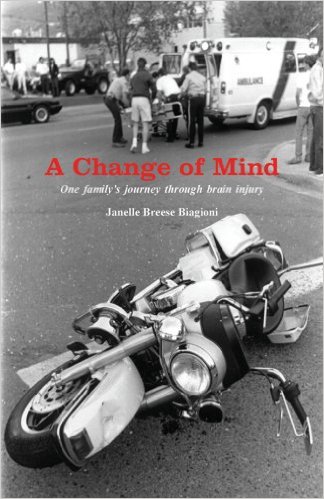 This is one family’s journey through brain injury. Highly compelling and emotional. Straight from the heart.
This is one family’s journey through brain injury. Highly compelling and emotional. Straight from the heart.
Book on marital stress and adjustment for families when a spouse has a brain injury. Discusses emotional trauma for family, grieving, mourning, parenting, and care giving after severe head trauma.
Doing Up Buttons
by Christine Durham
A deeply personal yet practical account of understanding head injury.
Gifts from the Broken Jar: Rediscovering Hope, Beauty and Joy
by PJ Long
 Everyone, at some time, learns how life can change in a moment: with the crossing of the center line on a highway or the reading of a blood test; a telephone’s knell in the still of night or a spouse’s hesitation before the unspeakable is spoken. Occasionally, out of the turmoil emerges a work of exceptional wisdom and beauty. Gifts from the Broken Jar is one such work. Psychotherapist PJ Long’s life-altering moment came when the bolt of a terrified horse left her brain-injured. She became a stranger to herself, unable to drive a car, prepare a meal, or carry on a conversation.
Everyone, at some time, learns how life can change in a moment: with the crossing of the center line on a highway or the reading of a blood test; a telephone’s knell in the still of night or a spouse’s hesitation before the unspeakable is spoken. Occasionally, out of the turmoil emerges a work of exceptional wisdom and beauty. Gifts from the Broken Jar is one such work. Psychotherapist PJ Long’s life-altering moment came when the bolt of a terrified horse left her brain-injured. She became a stranger to herself, unable to drive a car, prepare a meal, or carry on a conversation.
But when PJ began to write, pen and ink acted as needle and thread, mending her torn mind and stitching together a new life. Lessons she had gleaned over years of helping others returned to guide her. And as PJ wrote, she gained profound insight into the resilience of the spirit and the unexpected joys of everyday life.
Warm, engaging, and exquisitely crafted, Gifts from the Broken Jar will take its place beside treasured works like May Sarton’s journals or Tuesdays with Morrie–books that tell the quieter tale, savoring the ordinary and discovering life’s wonders.
Scattered Minds
by Gabor Mate
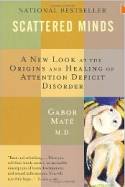 A groundbreaking book explains what really causes Attention Deficit Disorder.
A groundbreaking book explains what really causes Attention Deficit Disorder.
Attention Deficit Disorder (ADD) has quickly become a controversial topic in recent years. Whereas other books on the subject describe the condition as inherited, Dr. Gabor Mate believes that our social and emotional environments play a key role in both the cause of and cure for this condition. In Scattered, he describes the painful realities of ADD and its effect on children as well as on career and social paths in adults.
While acknowledging that genetics may indeed play a part in predisposing a person toward ADD, Dr. Mate moves beyond that to focus on the things we can control: changes in environment, family dynamics, and parenting choices. He draws heavily on his own experience with the disorder, as both an ADD sufferer and the parent of three diagnosed children. Providing a thorough overview of ADD and its treatments, Scattered is essential and life-changing reading for the millions of ADD sufferers in North America today.
Stillness Speaks
by Eckhart Tolle
 In Stillness Speaks, best-selling author Eckhart Tolle illuminates the fundamental elements of his teaching, addressing the needs of the modern seeker by drawing from all spiritual traditions. At the core of the book is what the author calls “the state of presence,” a living in the “now” that is both intensely inspirational and practical.
In Stillness Speaks, best-selling author Eckhart Tolle illuminates the fundamental elements of his teaching, addressing the needs of the modern seeker by drawing from all spiritual traditions. At the core of the book is what the author calls “the state of presence,” a living in the “now” that is both intensely inspirational and practical.
When the pressures of future and past thinking disappear, fear and frustration also vanish, conquered by the moment. Stillness Speaks takes the form of 200 individual entries, organized into 10 topic clusters that range from “Beyond the Thinking Mind” to “Suffering and the End of Suffering.” The entries are concise and complete in themselves, but, read together, take on a transformative power.
When the Body says No: The Cost of Hidden Stress
by Gabor Mate
 The potential for wholeness and health resides in all of us, affirms Dr. Gabor Mate in When the Body Says No: The Cost of Hidden Stress. But disease is often the body’s way of saying “no” to what the mind cannot or will not acknowledge, warns the author, who quotes the latest scientific findings about the roles stress and individual emotional makeup play in the causation of cancer and other chronic illnesses. Mate is a medical doctor and bestselling author of Scattered Minds.
The potential for wholeness and health resides in all of us, affirms Dr. Gabor Mate in When the Body Says No: The Cost of Hidden Stress. But disease is often the body’s way of saying “no” to what the mind cannot or will not acknowledge, warns the author, who quotes the latest scientific findings about the roles stress and individual emotional makeup play in the causation of cancer and other chronic illnesses. Mate is a medical doctor and bestselling author of Scattered Minds.
This work offers stories from his own patients in the belief that insight is more helpful to people than advice. Natalie, for example, develops multiple sclerosis after years of marriage to a drunken and emotionally abusive husband. In another case, a 74-year-old man diagnosed with cancer experiences spontaneous remission. His own body mobilized formidable immune responses to defeat the disease. “If we gain the ability to look into ourselves with honesty, compassion and with unclouded vision, we can identify the ways we need to take care of ourselves,” says Mate, who invites us all to be our own health advocates by pursuing emotional competence in seven areas: acceptance, awareness, anger, autonomy, attachment, assertion, and affirmation. If a link exists between emotions and psychology, he says, not to inform people of it will deprive them of a powerful tool.
The Brain Injury Workbook
by Trevor Powell
 Evolved from working with head injured groups at Headway and those attempting to return to work, this is a rich, comprehensive and photocopiable workbook for professionals, carers and clients.
Evolved from working with head injured groups at Headway and those attempting to return to work, this is a rich, comprehensive and photocopiable workbook for professionals, carers and clients.
Contains over 140 cognitive rehabilitation exercises – tailored for memory, thinking skills, executive functions, awareness and insight, and emotional adjustment. Provides more than 40 information sheets on key problem areas, with questions for the reader, designed to educate and stimulate thinking and discussion. Suitable for both individuals and groups. Includes questionnaires for clients to complete with or without help and quizzes to evaluate and encourage information retention. Primarily for professionals where exercises or handout sheets can be photocopied and used therapeutically, The Brain Injury Workbook can also be used by carers or family members to provide stimulating activities for a brain-injured person. In addition, the brain-injured person themselves can work through the book on their own.
Brain Injury Survival Kit: 365 Tips, Tools and Tricks to Deal With Cognitive Function Loss
by Cheryle Sullivan
 Over 1.4 million people sustain a brain injury each year in the United States. Add to that the number of returning veterans with a brain injury and the numbers are staggering. This book aims to give brain injury survivors, their families, and loved ones the strategies they need to improve brain function and quality of life. It is a compendium of tips, techniques, and life-task shortcuts that author Cheryle Sullivan has compiled from her personal experience. Readers will learn successful approaches to: balancing a checkbook; using medication alarms; compensating for impaired memory function; locating things that have been put away; word finding; concentration exercises; communication tools; and much more!From basic principles to unique solutions for saving time and energy, this book is packed with helpful information for those coping with the special challenges of a brain injury.
Over 1.4 million people sustain a brain injury each year in the United States. Add to that the number of returning veterans with a brain injury and the numbers are staggering. This book aims to give brain injury survivors, their families, and loved ones the strategies they need to improve brain function and quality of life. It is a compendium of tips, techniques, and life-task shortcuts that author Cheryle Sullivan has compiled from her personal experience. Readers will learn successful approaches to: balancing a checkbook; using medication alarms; compensating for impaired memory function; locating things that have been put away; word finding; concentration exercises; communication tools; and much more!From basic principles to unique solutions for saving time and energy, this book is packed with helpful information for those coping with the special challenges of a brain injury.
As a brain injury survivor and a doctor, Dr. Cheryle Sullivan offers a unique perspective on neurologic damage and the resulting functional impairments. Dr. Sullivan speaks widely to a variety of audiences on brain injury, and has presented multiple workshops for The Brain Injury Association of Colorado and published articles in print and on the web on living with a brain injury.
Coping With Mild Traumatic Brain Injury
by Diane Stoler
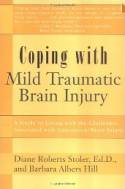 With a diagnosis of mild traumatic brain injury (MTBI), the individual will be told to rest for a few days or weeks, and, with luck, that may be the end of it. Unfortunately, many of those affected suffer ongoing, debilitating symptoms – migraines, depression, seizures, etc. for months or even years. Symptoms are unpredictable and are difficult to diagnose because there is no single test to detect MTBI and post-concussive syndrome (PCS). Stoler, a practicing psychologist who has herself experienced mild head injury, and Hill, a psychologist and writer, have compiled a comprehensive manual explaining what is involved in the diagnosis, treatment, and rehabilitation of brain-injured people. Presenting short case studies, they discuss the difficult diagnostic context of head trauma and offer practical suggestions for coping with physical and emotional repercussions. Especially valuable for patient education libraries.
With a diagnosis of mild traumatic brain injury (MTBI), the individual will be told to rest for a few days or weeks, and, with luck, that may be the end of it. Unfortunately, many of those affected suffer ongoing, debilitating symptoms – migraines, depression, seizures, etc. for months or even years. Symptoms are unpredictable and are difficult to diagnose because there is no single test to detect MTBI and post-concussive syndrome (PCS). Stoler, a practicing psychologist who has herself experienced mild head injury, and Hill, a psychologist and writer, have compiled a comprehensive manual explaining what is involved in the diagnosis, treatment, and rehabilitation of brain-injured people. Presenting short case studies, they discuss the difficult diagnostic context of head trauma and offer practical suggestions for coping with physical and emotional repercussions. Especially valuable for patient education libraries.
In this guide to living with problems associated with brain trauma, the authors set out to help victims help themselves. They provide information on what questions to ask and how to cope with various symptoms and offer advice and coping skills for everyday situations.
Brainlash: Maximize Your Recovery From Mild Brain Injury
by Gail L. Denton
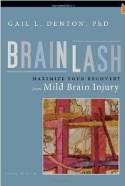 Mild traumatic brain injury can happen to anyone, anytime – in cars, sports, or workplace accidents, falls, or through physical assault, including domestic violence and shaken-baby syndrome. “Brainlash” provides the tools and facts to make the recovery process more intelligible – and to support the wide range of people affected by MTBI. For patients, family members, physicians and other health care providers, attorneys, health insurance companies, employers and others, it covers options and services, health and vocational issues, medico-legal topics, psychological and emotional implications, and more!
Mild traumatic brain injury can happen to anyone, anytime – in cars, sports, or workplace accidents, falls, or through physical assault, including domestic violence and shaken-baby syndrome. “Brainlash” provides the tools and facts to make the recovery process more intelligible – and to support the wide range of people affected by MTBI. For patients, family members, physicians and other health care providers, attorneys, health insurance companies, employers and others, it covers options and services, health and vocational issues, medico-legal topics, psychological and emotional implications, and more!
Author is a psychotherapist and a brain injury survivor. Text, for consumers, providing the tools and facts to make recovery of brain injury more intelligible. Covers every aspect of the recovery process, from driving and sex to self esteem, stamina, support systems, nutrition, pain, and more.
If I Only Had a Brain Injury
by Laura Bruno
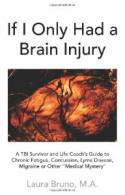 If I Only Had a Brain Injury is a delightful, powerful and highly informative book. Beautifully written, Laura Bruno draws upon her experiences with her own Traumatic Brain Injury (TBI) from a car accident. Her descriptions are vivid, deeply and personal. The book is very supportive and is an excellent resource for those dealing with Traumatic Brain Injuries and their caregivers. The book is also vitally important for those dealing with challenging and mysterious health issues like Chronic Fatigue, Lyme Disease and Migraines.
If I Only Had a Brain Injury is a delightful, powerful and highly informative book. Beautifully written, Laura Bruno draws upon her experiences with her own Traumatic Brain Injury (TBI) from a car accident. Her descriptions are vivid, deeply and personal. The book is very supportive and is an excellent resource for those dealing with Traumatic Brain Injuries and their caregivers. The book is also vitally important for those dealing with challenging and mysterious health issues like Chronic Fatigue, Lyme Disease and Migraines.
Bruno tells her own story while expertly weaving her insights within the context of the Wizard of Oz. I loved the humor, playfulness and utter seriousness in the book in the chapter titles and content. In the chapter, Somewhere Over the Rainbow Bruno states that her aim is, “…to inspire you and to guide you to resources that will empower you to take control over your own health and wellbeing.”
Gradually after Bruno’s own accident she began to realize that she had entered into a new land, and needed to learn anew. She recounts these realizations in the chapter, We’re not in Kansas Anymore. Bruno says, ” Like Dorothy, I knew I could not return the way I arrived. Like Dorothy, I eventually found my way “back home,” but I took the Technicolor journey with me. I wrote this book to help others to do so, to.”
The Brain That Changes Itself
by Norman Doidge
 For years the doctrine of neuroscientists has been that the brain is a machine: break a part and you lose that function permanently. But more and more evidence is turning up to show that the brain can rewire itself, even in the face of catastrophic trauma: essentially, the functions of the brain can be strengthened just like a weak muscle. Scientists have taught a woman with damaged inner ears, who for five years had had “a sense of perpetual falling,” to regain her sense of balance with a sensor on her tongue, and a stroke victim to recover the ability to walk although 97% of the nerves from the cerebral cortex to the spine were destroyed. With detailed case studies reminiscent of Oliver Sachs, combined with extensive interviews with lead researchers, Doidge, a research psychiatrist and psychoanalyst at Columbia and the University of Toronto, slowly turns everything we thought we knew about the brain upside down. He is, perhaps, overenthusiastic about the possibilities, believing that this new science can fix every neurological problem, from learning disabilities to blindness. But Doidge writes interestingly and engagingly about some of the least understood marvels of the brain.
For years the doctrine of neuroscientists has been that the brain is a machine: break a part and you lose that function permanently. But more and more evidence is turning up to show that the brain can rewire itself, even in the face of catastrophic trauma: essentially, the functions of the brain can be strengthened just like a weak muscle. Scientists have taught a woman with damaged inner ears, who for five years had had “a sense of perpetual falling,” to regain her sense of balance with a sensor on her tongue, and a stroke victim to recover the ability to walk although 97% of the nerves from the cerebral cortex to the spine were destroyed. With detailed case studies reminiscent of Oliver Sachs, combined with extensive interviews with lead researchers, Doidge, a research psychiatrist and psychoanalyst at Columbia and the University of Toronto, slowly turns everything we thought we knew about the brain upside down. He is, perhaps, overenthusiastic about the possibilities, believing that this new science can fix every neurological problem, from learning disabilities to blindness. But Doidge writes interestingly and engagingly about some of the least understood marvels of the brain.
“Only a few decades ago, scientists considered the brain to be fixed or “hardwired,” and considered most forms of brain damage, therefore, to be incurable. Dr. Doidge, an eminent psychiatrist and researcher, was struck by how his patients’ own transformations belied this, and set out to explore the new science of neuroplasticity by interviewing both scientific pioneers in neuroscience, and patients who have benefited from neuro-rehabilitation. Here he describes in fascinating personal narratives how the brain, far from being fixed, has remarkable powers of changing its own structure and compensating for even the most challenging neurological conditions. Doidge’s book is a remarkable and hopeful portrait of the endless adaptability of the human brain.”
Living with Brain Injury: A Guide for Families
by Richard C., MD Senelick
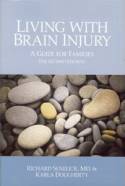 The new, updated edition of the renowned classic – complete with cutting edge neuroplasticity and exciting experimental rehabilitation research!
The new, updated edition of the renowned classic – complete with cutting edge neuroplasticity and exciting experimental rehabilitation research!
Living with Brain Injury will help readers – both families of patients and professionals alike – through new, uncharted territory of brain rehabilitation, a world where people we love may change before our eyes, physically, mentally, and emotionally.
Consumer text to aid people living with brain-injured survivors keep up with the latest information available.
Includes facts on neuroplasticity, experimental rehabilitation research, and the process of rehabilitation itself.
Brain Injury Survivor’s Guide: Welcome to Our World
by Larry Jameson
 Never Give Up! Brain Injury Survivor’s Guide: Welcome to Our World is written for Brain Injury Victims and their families by a Brain Injury Survivor and her family.
Never Give Up! Brain Injury Survivor’s Guide: Welcome to Our World is written for Brain Injury Victims and their families by a Brain Injury Survivor and her family.
Introducing B.R.A.I.N.-an innovative strategy for memory improvement.
Learn the strategies Beth used to overcome memory, cognitive and behavioral problems after her brain injury.
Dozens of lists and planning pages provide a way to compensate for a brain that is not performing “as it once did”. “Knowledge is Power to a Brain Injured Person.”
Mild Traumatic Brain Injury and Postconcussion Syndrome: The New Evidence Base for Diagnosis and Treatment
by Michael A. McCrea
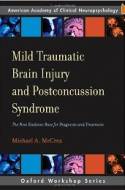 This is the first neuropsychology book to translate exciting findings from the recent explosion of research on sport-related concussion to the broader context of mild traumatic brain injury (MTBI) and post-concussive syndrome (PCS) in the general population. In addition, it includes a Continuing Education (CE) component administered by the American Academy of Clinical Neuropsychology.
This is the first neuropsychology book to translate exciting findings from the recent explosion of research on sport-related concussion to the broader context of mild traumatic brain injury (MTBI) and post-concussive syndrome (PCS) in the general population. In addition, it includes a Continuing Education (CE) component administered by the American Academy of Clinical Neuropsychology.
Traumatic brain injuries constitute a major global public health problem, but until now, MTBIs, which constitute up to 90 percent of all treated TBIs, have been difficult to evaluate and manage clinically because of the absence of a viable model. Dr. McCrea’s book thus provides a welcome evidence base for all clinicians – including psychologists, neuropsychologists, neurologists, neurosurgeons, rehabilitation medicine physicians, physiatrists, and nurses – involved in the clinical diagnosis and treatment of MTBI, as well as attorneys involved in personal injury litigation and personal injury defense. Each section of the book ends with a helpful summary of the ‘Top 10 Conclusions.’ Instructions for earning AACN-administered CE credit are included.
Train Your Mind, Change Your Brain: How a New Science Reveals Our Extraordinary Potential to Transform Ourselves
by Sharon Begley
 The Dalai Lama, Buddhist monks and some of the world’s leading neuroscientists all gather once a year at a conference on the latest discoveries in neuroplasticity: the study of how the human brain can change itself. (This is the second book the subject due out in March, along with Norman Doidge’s The Brain That Changes Itself). This remarkable conference serves as the center of Wall Street Journal science columnist Begley’s account of neuroplasticity.
The Dalai Lama, Buddhist monks and some of the world’s leading neuroscientists all gather once a year at a conference on the latest discoveries in neuroplasticity: the study of how the human brain can change itself. (This is the second book the subject due out in March, along with Norman Doidge’s The Brain That Changes Itself). This remarkable conference serves as the center of Wall Street Journal science columnist Begley’s account of neuroplasticity.
Until recently, the reigning theory was that neurons in the brain didn’t regenerate. Begley walks readers through the seminal experiments showing that in fact new neurons are created in the brain every day, even in people in their 70s. With frequent tangents into Buddhist philosophy, Begley surveys current knowledge of neuroplasticity. Most interesting is a series of experiments with Buddhist adepts who have spent over 10,000 hours meditating. What these experiments show is tantalizing: it might be possible to train the brain to be better at feeling certain emotions, such as compassion. No less interesting are the hurdles the scientists face in recruiting participants; yogis replied that if these scientists wanted to understand meditation, they should meditate. Despite the title, the book holds no neuroplasticity tips, but it is a fascinating exploration of the ways the mind can change the brain.
Healing Trauma: A Pioneering Program for Restoring the Wisdom of Your Body [With CD]
by Peter A. Levine
 Researchers have shown that survivors of accidents, disaster, and childhood trauma often endure life-long symptoms ranging from anxiety and depression to unexplained physical pain, fatigue, illness, and harmful “acting out” behaviors reflecting these painful events. Today, millions in both the bodywork and the psycho-therapeutic fields are turning to Peter A. Levine’s breakthrough Somatic Experiencing methods to effectively overcome these challenges. In Healing Trauma, Dr. Levine gives readers the personal how-to-guide for using the theory he first introduced in his highly acclaimed work, Waking the Tiger.
Researchers have shown that survivors of accidents, disaster, and childhood trauma often endure life-long symptoms ranging from anxiety and depression to unexplained physical pain, fatigue, illness, and harmful “acting out” behaviors reflecting these painful events. Today, millions in both the bodywork and the psycho-therapeutic fields are turning to Peter A. Levine’s breakthrough Somatic Experiencing methods to effectively overcome these challenges. In Healing Trauma, Dr. Levine gives readers the personal how-to-guide for using the theory he first introduced in his highly acclaimed work, Waking the Tiger.
Peter A. Levine received his Ph.D. in medical and biological physics from the University of California at Berkeley, and also holds a doctorate in psychology from International University. During his 35-year study of stress and trauma, he has contributed to scientific and medical publications and served as consultant for NASA’s space shuttle project. He has taught at the Hopi Guidance Center and at hospitals, trauma centers and pain clinics throughout the world.
The Mild Traumatic Brain Injury Workbook: Your Program for Regaining Cognitive Function & Overcoming Emotional Pain
by Douglas J Mason
 It happens in an instant – squealing breaks, a ladder that gives way, a pool cue swung in a moment of rage – but the affects of a blunt-force trauma to the head can last a lifetime. One of the more common injuries that can affect cognitive function, mild traumatic brain injury, or MTBI, affects more that half a million Americans each year, and research suggests that as many as 6.5 million Americans are living with the effects of MTBI. For the first time ever, this book assembles facts about MTBI together with a research-based program that readers can use to overcome the disadvantages of traumatic brain injury.
It happens in an instant – squealing breaks, a ladder that gives way, a pool cue swung in a moment of rage – but the affects of a blunt-force trauma to the head can last a lifetime. One of the more common injuries that can affect cognitive function, mild traumatic brain injury, or MTBI, affects more that half a million Americans each year, and research suggests that as many as 6.5 million Americans are living with the effects of MTBI. For the first time ever, this book assembles facts about MTBI together with a research-based program that readers can use to overcome the disadvantages of traumatic brain injury.
The book addresses the emotional issues that often accompany MTBI, especially anxiety and depression. Readers learn basic self-help strategies to counteract problems that may be caused by the injury. The later chapters discuss the four major domains of cognitive function and ways in which individuals can challenge their limitations and repair specific brain functions. The book concludes with an exploration of the various potential long-term affects of MTBI and the outside resources available to assist readers.
How to:
- Recognize the symptoms
- Assess the damage
- Recover brain function
- Improve memory and learning
- Increase attention span
- Cope with depression and anxiety
- Regain self-esteem
A specialist in cognitive impairments offers sufferers of mild traumatic brain injury the only workbook designed to help them overcome emotional pain and regain their mental capabilities.
The Memory Workbook: Breakthrough Techniques to Exercise Your Brain & Improve Your Memory
by D. J. Mason
 The Memory Workbook presents an array of innovative techniques, exercises, games and puzzles organized in ways that challenge and involve. Readers learn how to maximize the receptiveness of their senses, focus on what is important, rehearse and imprint information they want to save and use visual and sensory imagery to deepen the memory experience. The authors also incorporate the latest scientific findings on memory functioning, providing a wealth of information about medications, memory disorders and resources for additional help.
The Memory Workbook presents an array of innovative techniques, exercises, games and puzzles organized in ways that challenge and involve. Readers learn how to maximize the receptiveness of their senses, focus on what is important, rehearse and imprint information they want to save and use visual and sensory imagery to deepen the memory experience. The authors also incorporate the latest scientific findings on memory functioning, providing a wealth of information about medications, memory disorders and resources for additional help.
Douglas J. Mason, PsyD, LCSW, is a fellow and clinical associate with the Department of Psychiatry and the Bryan Alzheimer’s Disease Research Center at Duke University. Michael Lee Kohn, PsyD, is a psychologist at Senior Eastern Hospital in Williamsburg, Virginia.
Mindstorms: Living with Traumatic Brain Injury
by John W. Cassidy MD
 If your loved one has experienced a traumatic brain injury (TBI), you know that its effects can be devastating and often difficult to understand It may feel as if your world has shifted on its axis, and you’ll never get your bearings. Navigating your way through the morass of doctors, medical terms, and the healthcare system can be daunting, especially when you want only what’s best for the person you love. Dr. John Cassidy has devoted the past twenty-five years to helping families cope with traumatic brain injury; Mindstorms is his compassionate, comprehensive manual to demystifying this often frightening and life-changing condition.
If your loved one has experienced a traumatic brain injury (TBI), you know that its effects can be devastating and often difficult to understand It may feel as if your world has shifted on its axis, and you’ll never get your bearings. Navigating your way through the morass of doctors, medical terms, and the healthcare system can be daunting, especially when you want only what’s best for the person you love. Dr. John Cassidy has devoted the past twenty-five years to helping families cope with traumatic brain injury; Mindstorms is his compassionate, comprehensive manual to demystifying this often frightening and life-changing condition.
More than 6.3 million Americans live with a severe disability caused by a traumatic brain injury. In fact, because it’s so commonplace, but little talked of,TBI is often referred to as the “silent epidemic.” In these pages, Dr. Cassidy walks you through the different types of brain injury; explodes the common myths surrounding it; demonstrates the ways in which TBI may affect memory, behavior, and social interaction; explores the newest options in treatment and rehabilitation; and shows you how to hold on to your own sense of self as you journey through. Along with the practical information you’ll need, Mindstorms offers a constellation of instructive, moving stories from families and patients who are slowly, but surely, finding their way back. Their experiences are sure to inspire you and yours.
Head injury (The Facts)
by Audrey Daisley
 Awareness about head-injury prevention has significantly increased in the last decade. Yet on one summer evening in 1988, a young physician out for a bicycle ride without a helmet was hit by a careless driver and sustained a devastating brain injury. This autobiographical account “from the inside looking out” details that physician’s experience from the moment of impact through her remarkable comeback to resumption of teaching and research responsibilities. Her story shows the effect of a severe head injury on behavior and personality. This inspiring documentation will assist patients, families, and friends enduring the same difficulties and help health professionals understand and train their patients in the difficult rehabilitation process. Very highly recommended for consumer health and patient education collections.
Awareness about head-injury prevention has significantly increased in the last decade. Yet on one summer evening in 1988, a young physician out for a bicycle ride without a helmet was hit by a careless driver and sustained a devastating brain injury. This autobiographical account “from the inside looking out” details that physician’s experience from the moment of impact through her remarkable comeback to resumption of teaching and research responsibilities. Her story shows the effect of a severe head injury on behavior and personality. This inspiring documentation will assist patients, families, and friends enduring the same difficulties and help health professionals understand and train their patients in the difficult rehabilitation process. Very highly recommended for consumer health and patient education collections.
Locked inside a brain-injured head looking out at a challenging world is the premise of this extraordinary autobiography. Over My Head is an inspiring story of how one woman comes to terms with the loss of her identity and the courageous steps (and hilarious missteps) she takes while learning to rebuild her life. The author, a 45-year-old doctor and clinical professor of medicine, describes the aftermath of a brain injury eleven years ago which stripped her of her beloved profession. For years she was deprived of her intellectual companionship and the ability to handle the simplest undertakings like shopping for groceries or sorting the mail. Her progression from confusion, dysfunction, and alienation to a full, happy life is told with restraint, great style, and considerable humor.
I’ll Carry the Fork! Recovering a Life After Brain Injury
by Kara L. Swanson
 Kara Swanson’s remarkable story provides a very meaningful glimpse into the life of someone who has been changed by a head injury. By sharing her personal triumphs and challenges she gives us a new sensitivity for the countless people and families who focus each and every day on their recoveries. Both Kara and her book are special.
Kara Swanson’s remarkable story provides a very meaningful glimpse into the life of someone who has been changed by a head injury. By sharing her personal triumphs and challenges she gives us a new sensitivity for the countless people and families who focus each and every day on their recoveries. Both Kara and her book are special.
In January 1996, a van speeding through a red light ended the life Kara Swanson had known. She suddenly joined the 2 million Americans who suffer brain injury each year. It was like being thrust into a foreign country with no map, no way to speak the language, no directions home.
“This is the book I wish I could have read when I was first diagnosed with a brain injury,” Kara writes. I tried to take the information that it took me months and years to learn and put it into a short, easy-to-read book that would help survivors and their loved ones better understand the process of recovery.”
Written with laugh-out-loud humor, candor, and technical input from medical and legal professionals, “I’ll Carry the Fork!” offers inspiration and practical help to anyone dealing with the aftermath of brain injury. Because as Kara says, “Sometimes when your life ends, you don’t actually die.”
Cracked: Recovering After Traumatic Brain Injury
by Lynsey Calderwood
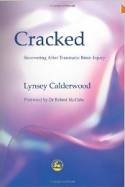 “I didn’t even recognize my own face in the mirror. Nothing felt right. Dazed. Paralyzed by fear, my first instinct was to run but I had nowhere to hide… Voices echoed, ricocheting across the room. I wished they sounded familiar.”
“I didn’t even recognize my own face in the mirror. Nothing felt right. Dazed. Paralyzed by fear, my first instinct was to run but I had nowhere to hide… Voices echoed, ricocheting across the room. I wished they sounded familiar.”
At the age of 14, Lynsey Calderwood suffered a traumatic brain injury that left her physically unmarked but destroyed her memory. Thrust back into an apparently nonsensical world of which she had no recollection, Lynsey spiraled downwards into depression and eating disorders as she became socially ostracized.
This is the story, in her own words, of Lynsey’s quest to discover her identity and, eventually, to come to terms with her disability. She faces devastating setbacks and her sense of loss, grief and rage is movingly recalled. Courage and perseverance, coupled with her engaging sense of humor, see her through. Her tale will be an inspiration to anyone who has faced similar obstacles.
TBI Hell: A Traumatic Brain Injury Really Sucks
by Geo Gosling
 Geo Gosling received a Traumatic Brain Injury (TBI) in a bicycle vs. automobile collision. He was the bicycle and he lost. This book describes his stay in the hospital and some of the trials and tribulations of his recovery, which is continuing to this day. He has a Bachelor of Science Degree from the University of California at Davis.
Geo Gosling received a Traumatic Brain Injury (TBI) in a bicycle vs. automobile collision. He was the bicycle and he lost. This book describes his stay in the hospital and some of the trials and tribulations of his recovery, which is continuing to this day. He has a Bachelor of Science Degree from the University of California at Davis.
At the time of his crash, he was the cellar master/asst. winemaker at a winery in the Napa Valley. He is unable to perform his job any longer, so he figured he would write a book to make some money.
Every Good Boy Does Fine: A Novel
by Timothy Laskowski
 “If I am anything unique now, it is within my present handicap. Only God’s select few have my privilege… my struggle for cognition is fitful and hard. My memory fades in and out like reception on a car radio in mountain ranges.” That eloquent summary captures the plight of Robert, the remarkable 35-year-old protagonist of Laskowski’s grim but revelatory debut novel. As the story begins, the former music major is confined to a wheelchair in a Montana group home after suffering a brain injury in a rock-climbing accident, unable to care for himself or control his impulses. His attempts to write his story and live independently frame the narrative, but it is Laskowski’s ability to take readers inside Robert’s consciousness that makes the book memorable. Robert makes several passes at his attractive female caregivers, despite having a sexual relationship with fellow patient Lorna, who is dying of multiple sclerosis; while those advances are dismissed as “inappropriate behavior,” to Robert they represent his longing for a normal existence. His family life is equally problematic: Robert’s parents have become reluctant to visit him, and his 13-year-old son, John, struggles to deal with Robert’s condition and his inability to remember John’s mother, Kelsey, who became pregnant just before Robert’s accident. Laskowski keeps the focus on Robert’s daily struggles in the early going, but as the book progresses he begins to pose wrenching questions about the nature of illness and sanity. The book closes with an elegiac recovery fantasy that serves as a poignant reminder of the strength of the human spirit in the face of devastating disability.
“If I am anything unique now, it is within my present handicap. Only God’s select few have my privilege… my struggle for cognition is fitful and hard. My memory fades in and out like reception on a car radio in mountain ranges.” That eloquent summary captures the plight of Robert, the remarkable 35-year-old protagonist of Laskowski’s grim but revelatory debut novel. As the story begins, the former music major is confined to a wheelchair in a Montana group home after suffering a brain injury in a rock-climbing accident, unable to care for himself or control his impulses. His attempts to write his story and live independently frame the narrative, but it is Laskowski’s ability to take readers inside Robert’s consciousness that makes the book memorable. Robert makes several passes at his attractive female caregivers, despite having a sexual relationship with fellow patient Lorna, who is dying of multiple sclerosis; while those advances are dismissed as “inappropriate behavior,” to Robert they represent his longing for a normal existence. His family life is equally problematic: Robert’s parents have become reluctant to visit him, and his 13-year-old son, John, struggles to deal with Robert’s condition and his inability to remember John’s mother, Kelsey, who became pregnant just before Robert’s accident. Laskowski keeps the focus on Robert’s daily struggles in the early going, but as the book progresses he begins to pose wrenching questions about the nature of illness and sanity. The book closes with an elegiac recovery fantasy that serves as a poignant reminder of the strength of the human spirit in the face of devastating disability.
Where is the Mango Princess? A Journey Back from Brain Injury
by Cathy Crimmins
 “Alan’s brain got run over by a speedboat,” Cathy Crimmins writes. “That last sentence reads like a bad country-western song lyric, but it’s true. It was a silly, horrible, stupid accident.” And so begins the harrowing tale of a family vacation gone awry when a speedboat collides with her husband’s small craft, changing their lives forever. Crimmins is used to writing with wit, self-effacing humor, and a warmth that can bring readers to their knees–or at least to tears of laughter. But in this stunning memoir about her husband’s brain injury and the subsequent fallout, Crimmins has outdone herself, bringing all her sharply honed narrative skills into play as she tackles the life-wrenching drama of witnessing her husband’s near death and ensuing rebirth as a very different person.
“Alan’s brain got run over by a speedboat,” Cathy Crimmins writes. “That last sentence reads like a bad country-western song lyric, but it’s true. It was a silly, horrible, stupid accident.” And so begins the harrowing tale of a family vacation gone awry when a speedboat collides with her husband’s small craft, changing their lives forever. Crimmins is used to writing with wit, self-effacing humor, and a warmth that can bring readers to their knees–or at least to tears of laughter. But in this stunning memoir about her husband’s brain injury and the subsequent fallout, Crimmins has outdone herself, bringing all her sharply honed narrative skills into play as she tackles the life-wrenching drama of witnessing her husband’s near death and ensuing rebirth as a very different person.
Crimmins takes readers inside the drama with all the right details and interior feelings to keep us fully mesmerized: her 7-year-old daughter’s ashen face, her husband’s twitching body, the paramedic’s alarming question, “Is your husband one of these people that ordinarily has large pupils?” As deftly as she takes readers inside this personal story of not-quite recovery–more like discovery–she is also able to pan back and show readers the comedic silver lining (the self-important doctors, the moments of mishaps, and of course, the whereabouts of the mysterious Mango Princess) that lies within the cloud of her family’s tragedy. Anyone who has endured a head trauma or loved someone who has will be engrossed by this wise and knowledgeable storyteller. The rest of us will have a captivating lesson about the rejuvenation of the brain as well as the human heart.
Although it was frightening when Crimmins’s husband, Alan, an attorney, suffered a traumatic brain injury (TBI) while on a family vacation, it was his long-term rehabilitation that proved most daunting, for brain injuries can cause significant personality changes. This chronicle of Al’s injury, treatment and rehabilitation shows how perplexing and stressful traumatic brain injury can be for both victim and family. Crimmins (When My Parents Were My Age, They Were Old and Newt Gingrich’s Bedtime Stories for Orphans) knows how to tell a story for maximum effect, filling this account with funny and outrageous anecdotes, raw emotion and predictable rage toward HMOs that won’t fund optimal treatment. Like many TBI patients, Al became bizarrely uninhibited; Crimmins describes how he swears profusely and masturbates in public, and her worries about suddenly being married to a stranger: “I once had a husband who was doing a dissertation on Samuel Beckett, who had a thing for obscure Japanese cinema…. I can’t imagine being married to a man who won’t be able to discuss books or go to the theater with me.” Despite Alan’s extraordinarily good recovery, Crimmins muses, “I miss his dark side…. Now I wince as he chortles over mediocre cartoons… with TBI he has become what he wasn’t before, a regular, uncomplicated guy.” Though this story is an eye-opener on some levels, it remains essentially shallow. More information on neurological research would have been welcome, and attention to the experience of other TBI families (to which Crimmins devotes only three paragraphs) would have added the perspective that this self-centered account lacks.
Being with Rachel: A Personal Story of Memory and Survival
by Karen Brennan

Brennan was vacationing in Mexico when she received word that her 24-year-old daughter, Rachel, had been severely injured in a motorcycle accident and was in a deep coma. Brennan rushed to her daughter’s bedside at Denver General Hospital. The prognosis was poor, but Brennan’s faith was steadfast through the months of the coma and the agonizingly slow discovery of the extent of Rachel’s brain injuries. Brennan’s devotion to her daughter was instrumental in her improvement; she stayed with Rachel in the hospital night and day, lying next to her, talking to her and monitoring her medical care and physical therapy. She also read widely about brain injury, learning about the personality changes, language problems and severe memory deficits that often ensue. Anxious to resume her life as an English professor at the University of Utah, Brennan moved back to Salt Lake City with Rachel. As Rachel began intensive therapy, her most troubling problem was losing her short-term memory. Although she was able to move about on a motorized wheelchair, she would often get lost, having forgotten where she lived. To alleviate the strain of being Rachel’s sole caretaker, Brennan moved with Rachel to Tucson, where they had lived years earlier and Rachel was familiar with the terrain. They visited friends in Mexico, where Rachel seemed most comfortable, exploring her talent as an artist and living independently. Brennan, who teaches creative writing, provides readers with a compelling narrative, conveying without bathos how she and her daughter met the challenges that resulted from Rachel’s terrible accident.
Brennan is an award-winning fiction writer, but here she tells a true story: how she coped with the aftermath of her 21-year-old daughter’s devastating motorcycle accident, helping her to reconstruct her memory and her life.
Crooked Smile: One Family’s Journey Toward Healing
by Lainie Cohen
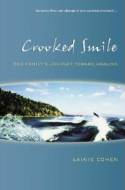 This moving and inspiring memoir tells the story of a single, heart-wrenching year in one family’s life in which a son sustains a severe brain injury, a daughter is stricken by a degenerative muscle condition, another son is suspended from school for drug use, and a grandfather passes away. With sensitivity and honesty, the mother recounts the harrowing days of stresses and ceaseless worry within the family and reveals the importance of familial bonds in overcoming tragedy. More than an account of heartache, this story serves as a resource for other families coping with debilitating injuries and unexpected trauma.
This moving and inspiring memoir tells the story of a single, heart-wrenching year in one family’s life in which a son sustains a severe brain injury, a daughter is stricken by a degenerative muscle condition, another son is suspended from school for drug use, and a grandfather passes away. With sensitivity and honesty, the mother recounts the harrowing days of stresses and ceaseless worry within the family and reveals the importance of familial bonds in overcoming tragedy. More than an account of heartache, this story serves as a resource for other families coping with debilitating injuries and unexpected trauma.
Lainie Cohen has more than 25 years of experience as an educator and a psychological consultant. She has been published in Canadian Jewish News, Globe and Mail, and Parchment. She lives in Toronto, Ontario.
A Three Dog Life
by Abigail Thomas
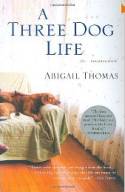 An wrenching, elegiac portrait of the author’s third husband, Rich, who flounders in a miasmic present after a hit-and-run in their Manhattan neighborhood shatters his skull, destroys his short-term memory and consigns him to permanent brain trauma. A deft balance of fevered pathos and dark humor link this memoir, in spirit and theme, to Safekeeping, Thomas’s collected vignettes that memorialize her second husband. But Thomas also finds wellsprings of inspiration in her tragicomic interactions with Rich and in the self-reliance she’s forced to develop, aided by her faithful dogs (the book’s title adapts an aboriginal phrase, derived from the tradition of cuddling with dogs on frigid nights). Rich himself reminiscent of a Stephen King eccentric utters eerily prescient, absurdly poetic non sequiturs, probing the essence of time and love with ingenuous intuition, though his acute paranoia and confusion make these exchanges truly heartbreaking. Thomas’s quick-cutting chronology and confessional narration subtly re-enacts the soupiness of her husband’s mind, even as she quietly thanks him for the wisdom of living in the present.
An wrenching, elegiac portrait of the author’s third husband, Rich, who flounders in a miasmic present after a hit-and-run in their Manhattan neighborhood shatters his skull, destroys his short-term memory and consigns him to permanent brain trauma. A deft balance of fevered pathos and dark humor link this memoir, in spirit and theme, to Safekeeping, Thomas’s collected vignettes that memorialize her second husband. But Thomas also finds wellsprings of inspiration in her tragicomic interactions with Rich and in the self-reliance she’s forced to develop, aided by her faithful dogs (the book’s title adapts an aboriginal phrase, derived from the tradition of cuddling with dogs on frigid nights). Rich himself reminiscent of a Stephen King eccentric utters eerily prescient, absurdly poetic non sequiturs, probing the essence of time and love with ingenuous intuition, though his acute paranoia and confusion make these exchanges truly heartbreaking. Thomas’s quick-cutting chronology and confessional narration subtly re-enacts the soupiness of her husband’s mind, even as she quietly thanks him for the wisdom of living in the present.
In these exquisitely written essays Thomas reflects on how her marriage had to be reinvented after the night her husband, Richard, took their dog, Harry, out for a walk, and Harry came home alone. Richard had been hit by a car and was lying bleeding in the street. The traumatic head injury he suffered didn’t kill him, as attending police had predicted it would, but it rendered him susceptible to large-scale memory loss, hallucinations, and such wild rages that Thomas was forced to commit him to an institution. Lesser events have destroyed relationships, so it would not be surprising to learn that Thomas abandoned Richard. She didn’t. Instead, she sold their New York apartment, moved upstate to be near him, and acquired two more dogs to keep her company. What’s more, she can’t imagine life without her husband, saying, “It would be like falling through space with a parachute but no planet to land on.” Thomas has elevated what could be, at best, an overemotional sermon or, at worst, a grim romp in self-pity to a high plain of true inspiration.
Rehabilitation for Traumatic Brain Injury
by Walter M. High
 Rehabilitation For Traumatic Brain Injury (TBI) is a state-of-the-science review of the effectiveness of rehabilitation interventions. Leading experts conduct evidence-based reviews of specific areas of brain injury rehabilitation summarizing what is known in each area, critiquing the methodological problems of studies in the area, and then outlining new directions for research. The book begins with a review of the history of rehabilitation for TBI from World War I until the present. The second section of the book examines the rehabilitation of specific cognitive impairments in awareness, memory, executive functioning, communication, and emotion and behavior. The third section investigates special topics in rehabilitation of persons with TBI including substance abuse, interventions for caregivers, and vocational rehabilitation. The fourth section of the book covers rehabilitation with specific populations: children, older adults, and persons from diverse cultures. The final section examines topics in medical rehabilitation including treatment of spasticity, minimally conscious patients, and the contribution of neuroimaging to rehabilitation.
Rehabilitation For Traumatic Brain Injury (TBI) is a state-of-the-science review of the effectiveness of rehabilitation interventions. Leading experts conduct evidence-based reviews of specific areas of brain injury rehabilitation summarizing what is known in each area, critiquing the methodological problems of studies in the area, and then outlining new directions for research. The book begins with a review of the history of rehabilitation for TBI from World War I until the present. The second section of the book examines the rehabilitation of specific cognitive impairments in awareness, memory, executive functioning, communication, and emotion and behavior. The third section investigates special topics in rehabilitation of persons with TBI including substance abuse, interventions for caregivers, and vocational rehabilitation. The fourth section of the book covers rehabilitation with specific populations: children, older adults, and persons from diverse cultures. The final section examines topics in medical rehabilitation including treatment of spasticity, minimally conscious patients, and the contribution of neuroimaging to rehabilitation.
Confronting Traumatic Brain Injury: Devastation, Hope, and Healing
by Professor William J. Winslade
 Author William J. Winslade suffered from a traumatic brain injury (TBI) as a 2-year-old, when he fell from his second-story porch and landed straight on his head. He’s one of the lucky ones who’s recovered fully, both physically and emotionally; his only souvenirs of the fall are a three-inch scar and a dent in his skull. He warns that of the 2 million Americans who suffer from TBI each year (most of them from car and motorcycle accidents), up to 100,000 of them will die prematurely. More than 90,000 of them will face up to a decade of extensive rehabilitation, at a cost of up to $4 million each. Even a TBI as seemingly minor as a concussion can have devastating long-term physical consequences, causing seizures, memory loss, learning disabilities, and more. However sorry these problems may be, he writes, “the truly debilitating deficits” are the less-obvious emotional effects, “such as social isolation, [which] take their own insidious toll.”
Author William J. Winslade suffered from a traumatic brain injury (TBI) as a 2-year-old, when he fell from his second-story porch and landed straight on his head. He’s one of the lucky ones who’s recovered fully, both physically and emotionally; his only souvenirs of the fall are a three-inch scar and a dent in his skull. He warns that of the 2 million Americans who suffer from TBI each year (most of them from car and motorcycle accidents), up to 100,000 of them will die prematurely. More than 90,000 of them will face up to a decade of extensive rehabilitation, at a cost of up to $4 million each. Even a TBI as seemingly minor as a concussion can have devastating long-term physical consequences, causing seizures, memory loss, learning disabilities, and more. However sorry these problems may be, he writes, “the truly debilitating deficits” are the less-obvious emotional effects, “such as social isolation, [which] take their own insidious toll.”
Winslade is on mission to spur massive attention to TBI, both from the public and the government, to increase awareness to prevent these injuries, and to improve resources for when injuries do occur. And the profiles of TBI victims in this sobering book should move anyone with a soul to action. Without slipping into melodrama, he presents harrowing tales of the dramatic personality changes that can result from TBI. Winslade ends on a practical, moving note, advocating several ways that TBI can be prevented from raising the driving age to banning pro boxing. “Consider the misery and money that we would save by cutting in half the number of Americans killed or severely disabled by brain trauma every year,” he writes. Until simple preventive measures are taken and until the “long national slumber” of ignorance ends, he warns, TBI will continue to be the leading cause of disability and death in children and young adults.
Medical philosopher Winslade has written a readable and broad overview of head injury: causes, treatment, rehabilitation, and health and public policy implications. The medicine and science of brain injury, however, are secondary in this book to discussions of rehabilitation and policy issues. The author survived a brain injury as a child, and that story, as well as high-profile cases such as Reagan aide James S. Brady and the Central Park “wilding” victim, inform the book and give it a personal touch. Hard to categorize, finally: this book will certainly be of interest to those who work with victims of head injury and their families; its readability, organization, and practical information make it a reasonable choice for community collections and collections in healthcare and social service settings.
I Can’t Remember Me: Recovery After Traumatic Brain Injury
by Judy Martin- Urban
With one brief phone call, Judy Martin-Urban’s life changed forever. Her deeply personal portrayal of the complexity of mourning her grandson while remaining hopeful of her daughter’s survival and recovery will touch everyone who reads it. Judy openly acknowledges all of her conflicting emotions surrounding the car accident. Her honest discussion of the accident itself and the devastation that resulted underscores the fact that one choice can change an entire family forever.
It took a great deal of courage and faith to share her family so publicly. The book is enhanced by Courtney’s description of recovering from traumatic brain injury. It is an effective juxtaposition to read the account from the mother/grandmother and then to read how it feels from Courtney’s point of view.
Surviving Black Ice
by David W. Fierce
An invisible patch of “black ice” starts David W. Fierce’s head-on collision with life. At first deep in coma, and later struggling to perform the simplest tasks we all take for granted, David was forced to start over.
Packed with eye-opening insight into the developing mind of a head injury survivor, Surviving Black Ice offers help and understanding to all survivors and those that care about them.
Get to the Heart: My Story
by Barbara Mandrell
In the folksy style favored by country music stars and their devoted fans, Mandrell invites us in the front d oor of her life for a 400-page heart-to-heart. A professional musician playing Las Vegas at 10, touring with Johnny Cash, George Jones, and Patsy Cline at 13, Mandrell cut her first record, got married, and entertained troops in Vietnam while still a teenager. In 1984, at the zenith of her career, she and her two oldest children were in an automobile accident that resulted in the death of the other driver and significant injuries to Mandrell. Alternating chapters juxtapose a standard autobiography with events preceding and following the accident; the two are distinct yet often dovetail. Throughout, Mandrell freely dispenses her opinions on everything from abortion to the appropriate length of men’s hair.
oor of her life for a 400-page heart-to-heart. A professional musician playing Las Vegas at 10, touring with Johnny Cash, George Jones, and Patsy Cline at 13, Mandrell cut her first record, got married, and entertained troops in Vietnam while still a teenager. In 1984, at the zenith of her career, she and her two oldest children were in an automobile accident that resulted in the death of the other driver and significant injuries to Mandrell. Alternating chapters juxtapose a standard autobiography with events preceding and following the accident; the two are distinct yet often dovetail. Throughout, Mandrell freely dispenses her opinions on everything from abortion to the appropriate length of men’s hair.
Bookstore links:
“The internet’s largest online traumatic brain injury bookstore” from neuroskills.com – Centre For Neuroskills. (Warning: this is a pinterest site and so requires a pinterest account to browse.)
Lash & Associates Publishing / Training, Inc www.lapublishing.com
